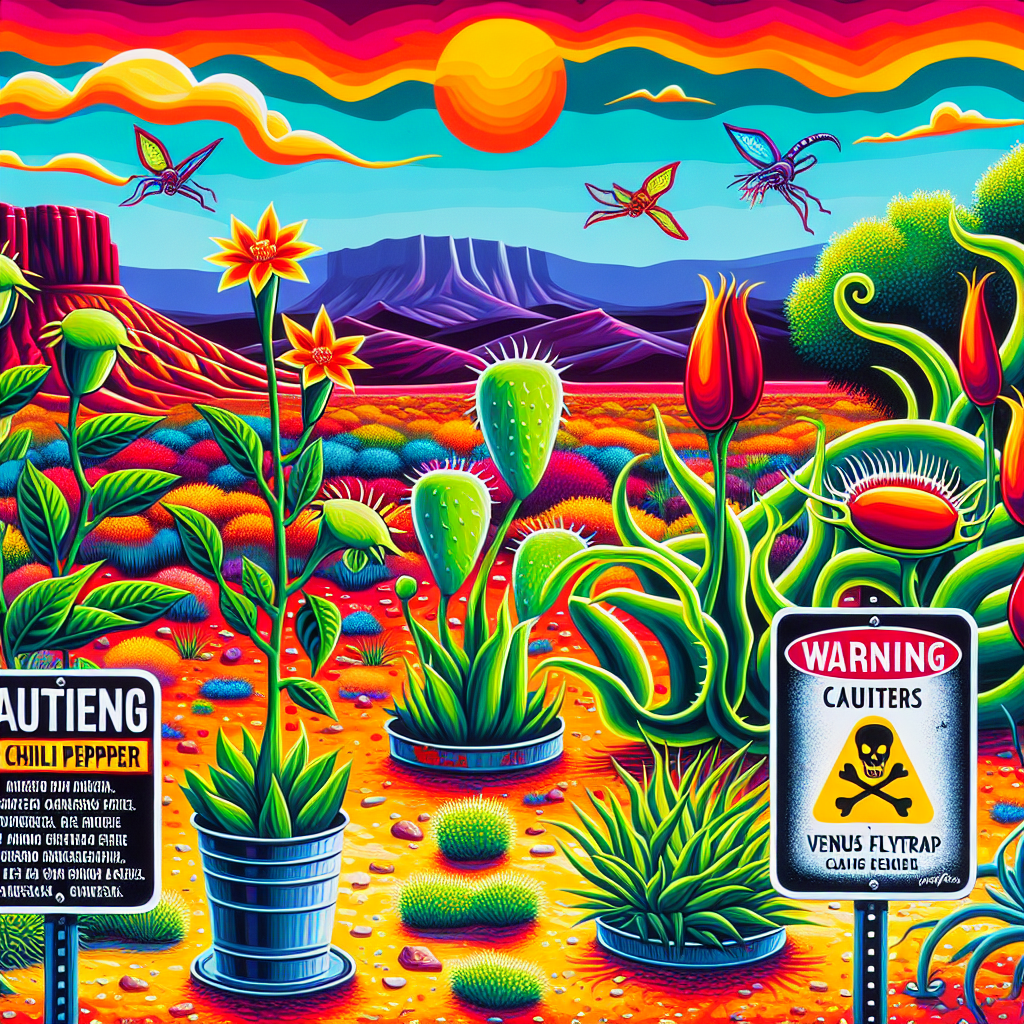How to Shield Oak Trees from Sudden Oak Death
Updated July 25, 2024 at 3:19 am
Safeguarding your oak trees from the devastating effects of Sudden Oak Death is crucial for their longevity and health. This article will provide you with effective strategies and preventative measures to protect these majestic trees from this deadly disease.

Understanding Sudden Oak Death
Oak trees are not just a beautiful sight to behold; they are also indispensable to the ecosystem. They provide habitat for wildlife, maintain biodiversity, and offer numerous environmental benefits, from water retention to carbon sequestration. However, a serious threat called Sudden Oak Death (SOD), caused by the fungal pathogen Phytophthora ramorum, jeopardizes the health and longevity of these majestic trees.
First reported in the 1990s in California and southwestern Oregon, SOD has rapidly become a concern for oak tree conservation. The disease causes cankers on the bark, leading to quick tree death, hence the name "Sudden" Oak Death. It’s a serious issue, and if you’re noticing oaks showing symptoms of decline, it’s important to arm yourself with the right information and tools to protect them.
Identifying Symptoms of Sudden Oak Death
Before diving into prevention strategies, let’s brief ourselves on what to watch out for. Symptoms of SOD can include bleeding cankers on the tree’s trunk, a black or brown ooze, and a discoloration of foliage. On closer inspection, you may spot dieback in the canopy, where leaves turn brown and twig dieback occurs. It’s a visual alarm calling for immediate action to prevent further spread.
If you see these symptoms, it’s pivotal to confirm SOD before taking any management steps. Accurate diagnosis usually involves laboratory testing since the symptoms can mimic other oak diseases or stress factors. Once confirmed, it’s time to consider management and prevention strategies vigilantly.
Prevention Strategies for SOD
Preventing the spread of SOD is a twofold approach: you must consider both the environmental conditions that favor the pathogen and the necessary cultural practices to reduce the risk of infection. By fostering an environment less conducive to P. ramorum, you stand a better chance at keeping oak trees healthy and safeguarded against the disease.
Sanitation is a cornerstone in preventing the spread of SOD. This includes promptly removing infected plant material, sterilizing tools between uses, and reducing water splash, which can distribute spores. When done correctly, these steps can significantly mitigate the contamination risk unto surrounding healthy trees.
Choosing the Right Products to Protect Oak Trees
There are several products on the market aimed at protecting oak trees from pathogens like P. ramorum. One such product is Agri-Fos, a phosphonate-based fungicide that’s been found to boost the tree’s defense system against the pathogen. According to various testimonials, applying Agri-Fos through bark painting, soil injection, or foliar application has aided in the prevention and control of SOD in susceptible oak species.
Remember, Agri-Fos is most effective as part of an integrated management plan, incorporating both chemical and cultural controls. It’s often recommended to use it in conjunction with a surfactant such as Pentra-Bark, which helps the product penetrate the tree’s bark and reach the pathogen within.
Pros
- Enhances the tree’s natural defense mechanisms.
- Flexible application methods (bark painting, soil injection, foliar application).
- Particularly effective when used early in the disease’s progression.
Cons
- Not a standalone solution; it requires an integrated approach.
- Might not be effective for advanced cases of SOD.
- Regular applications are necessary for continued protection.
The positive reviews around Agri-Fos and its companion surfactant, Pentra-Bark, show cases where trees’ symptoms of SOD were mitigated. However, it’s also clear from user experiences that consistency and timeliness in application are key. If you’re considering this route, studies suggest that treating oaks once a year, typically in the fall, is a great preventative action.
Find This and More on Amazon
Implementing Cultural Practices
Cultural practices play a significant part in managing tree health. Good practices such as adequate spacing between trees, avoiding unnecessary wounding of the bark, and proper disposal of infected plant material can decrease the likelihood of SOD infection. Proper mulching around oak trees also proves beneficial as it keeps the soil moist and cold, which is less favorable for the pathogen’s growth.
Another critical measure includes managing the water drainage around oak trees, ensuring that the area doesn’t become waterlogged, which can accelerate the spread of P. ramorum. This might involve redirecting water flow away from oaks or amending the soil to improve drainage. Seeking advice from experts can be incredibly helpful when tailoring these practices to specific landscapes.
Building a Healthier Environment Around Oaks
While we focus on the oak trees, it’s also essential to consider the broader environment in which they grow. Maintaining plant diversity around the oaks can help reduce the occurrence of SOD. Avoid planting known hosts of P. ramorum like rhododendrons, camellias, and bay laurels nearby: they are known carriers of the disease and can advance its spread to your oaks.
Alongside plant diversity, fostering a strong community of beneficial microorganisms in the soil through the use of composts and biological agents can create a barrier against pathogens like P. ramorum. Healthy soil is a foundation for robust tree growth and can be a significant line of defense against many diseases, not just SOD.
When to Consult a Professional Arborist
If you sense the situation with your oaks might be beyond your expertise, don’t hesitate to consult a professional arborist. Certified arborists have the skills and knowledge to accurately diagnose and treat various tree diseases, including SOD. They are well-versed in the most effective treatment plans and can provide invaluable guidance on the best course of action for your specific situation.
It’s also worth noting that if you’re faced with the removal of an infected oak, professional arborists can ensure it’s done safely and properly, minimizing the chance of spreading the pathogen further. You might find it’s said that people say consulting with an arborist before applying any treatments is a wise move, ensuring that you’re on the correct path to protecting your oaks from SOD.
Regular Monitoring and Vigilance
Even with the best prevention strategies in place, regular monitoring remains crucial in the battle against Sudden Oak Death. Keep a close eye on your oaks throughout the year for any signs of stress or disease. Early detection is perhaps the most effective way to manage SOD, as it allows you to act quickly and potentially save the tree, as well as protect others.
It’s crucial to be vigilant throughout the seasons, especially during warm, moist periods which encourage spore production. If caught early, treatment plans have a higher success rate, and you’re more likely to halt the disease’s progress before it can do significant damage.
Citizen Science and Community Efforts
Joining forces with community efforts to fight Sudden Oak Death can also be powerful. Participating in local SOD blitzes where members survey trees and collect data helps to monitor the spread of the disease and can contribute to the development of management policies and practices. It’s a chance to connect with others who share your concerns and can offer support and advice.
These communal activities not only help protect the oak trees within your vicinity but also empower you and others to become advocates for these vital natural resources. By combining your individual efforts with broader initiatives, you can help create a force for positive change in the fight against this devastating plant disease.
Exploring Resistant Varieties
If you’re in an area heavily affected by SOD, you might want to consider planting oak varieties that are resistant to the disease. Research continues to identify oak species and hybrids with a genetic makeup that makes them less susceptible to P. ramorum. By opting for these varieties, you’re investing in a more resilient future for your landscape.
Tanoak hybrids and certain species of white oaks have shown some resistance to SOD and could be excellent alternatives to more susceptible species. Although this field is still in its infancy, scientists are hopeful that more resistant varieties will be identified in the future, offering a glimmer of hope to oak conservationists.
Moving Forward with Knowledge and Action
Protecting oak trees from Sudden Oak Death requires a well-rounded approach that incorporates knowledge, vigilance, and proactive management. While it can be disheartening to witness the effects of this disease, remember that there are steps you can take to make a significant impact on the health of your oaks.
From employing environmentally friendly prevention strategies and consulting with professionals to engaging with community efforts and considering resistant varieties, each action contributes to the greater cause. As you equip yourself with these insights and tools, you empower not only yourself but also the health of the environment. So, be that friend to the oaks and stand guard against Sudden Oak Death, preserving these sentinels of the forests for future generations to cherish.
The Role of Proper Tree Care in Preventing Sudden Oak Death
Taking care of oak trees goes beyond the mere aesthetics of landscaping. Proper tree care is one of the vital elements in fortifying your oaks against Sudden Oak Death (SOD). It begins with understanding the specific needs of the species you have and tailoring your care accordingly.
For instance, oak trees prefer well-drained soil and can be susceptible to root rot if water does not drain adequately. Overwatering can attract the Phytophthora pathogen, setting the stage for SOD. Thus, regular assessment of soil moisture and appropriate irrigation practices are not just acts of care but essential preventative measures.
Landscaping Adjustments to Minimize SOD Risk
Thoughtful landscaping can play a significant role in SOD prevention. One strategy involves spacing out oak trees appropriately. Proper spacing encourages good air circulation, which helps foliage dry quickly, reducing the risk of SOD spore germination and spread. Consider establishing buffer zones between your oaks and plants known to harbor the pathogen.
Interruption of the disease’s path is also crucial. If your property includes slopes, it’s advisable to plant non-host species uphill from oaks to prevent water runoff from carrying the pathogen downhill to them. By adjusting the landscape design, you can create a more hostile environment for Phytophthora ramorum and a safer haven for your oak trees.
Integrating Fungicides with Caution
Fungicides can be effective tools in managing SOD, but they should be employed judiciously and as part of a broader management plan. It is important to rotate different fungicide classes to avoid resistance buildup in the pathogen. Not all fungicides are equal in their effectiveness against P. ramorum, so choosing the right one, like Agri-Fos, is essential.
Always follow the label directions and any guidance provided by local extension services or the product manufacturer. Despite the potential benefits, it’s critical to remember that fungicides are only one component of the fight against SOD and should be used in conjunction with other management strategies.
Breaking the Disease Cycle with Quarantine Measures
Phytophthora ramorum can spread quickly and quietly before it’s ever noticed on a property. To halt its progression, imposing quarantine measures on affected trees is necessary. This involves restricting the movement of infected trees, plant parts, and even soil from the affected areas to uninfected ones.
When receiving plant material from outside sources, ensure it’s certified disease-free. This is particularly important for nurseries and landscapers who frequently source a variety of plants. Remember to practice responsible planting and sourcing habits, as one infected plant can risk the health of your entire landscape.
Chemical and Organic Soil Amendments
The battle against SOD isn’t fought on the leaves and bark alone. The soil provides the foundation for your oak tree’s health. Employing both chemical and organic soil amendments can improve your soil’s structure and biological activity, potentially making it less hospitable to P. ramorum.
Gypsum, biochar, and certain organic composts can enhance drainage and introduce beneficial organisms that counteract soilborne pathogens. It’s essential, however, to consult with a soil scientist or arborist to tailor amendments to your specific soil conditions, ensuring that they contribute positively to your preventive efforts.
Technology and Tools for SOD Management
Advancements in technology and tools have given us new means to detect and manage Sudden Oak Death. Devices like moisture meters and pH soil testers allow for accurate monitoring of the living conditions around your oaks, letting you adjust as needed to prevent SOD-friendly environments from developing.
Moreover, innovations in diagnostic testing enable earlier detection of P. ramorum, even when visible symptoms are not yet apparent. These tools, along with apps and online resources dedicated to SOD management, provide a modern arsenal to assist in protecting oak trees from this pervasive threat.
Educating Yourself and Others
Knowledge is a crucial weapon against SOD. By educating yourself and others about this disease, you can foster a community better equipped to identify early signs and take the necessary actions to prevent its spread. This can include workshops, seminars, and volunteer monitoring programs which serve as platforms to disseminate vital information about SOD.
Resources such as those from university extension programs offer a wealth of knowledge that can be shared among neighbors, local gardening clubs, and even on social media. Spreading awareness not only helps protect your trees but also contributes to the collective effort to safeguard regional oak populations.
Regular Soil Testing and Analysis
Soil testing isn’t a one-time event in the life of an oak tree – it should be a regular part of your tree care regime. Routine analysis can provide critical insights into the nutrient profile of your soil, as well as its potential to sustain P. ramorum. Armed with this knowledge, you can adjust your cultural practices to preempt potential issues.
Regular soil tests can also help you track the effectiveness of any amendments or changes in your management plan, allowing you to be responsive and informed in your approach to preventing SOD. It’s a proactive step that supports the overall health of your oak trees and the surrounding environment.
Involving and Leveraging Local Authorities and Programs
Local authorities, including agricultural and natural resource departments, often have programs in place to combat widespread plant diseases like SOD. Leverage these programs to your advantage. They can provide you with current information, access to testing, and guidelines specific to your locality on how to manage SOD effectively.
Some areas may have regulations or recommendations in place for treating or removing infected trees and disposing of plant debris. By involving these authorities and following their guidance, you can play a role in the coordinated community response to mitigate the impact of Sudden Oak Death.
Long-Term Commitment and Conservation
Finally, protecting oak trees from Sudden Oak Death is not a short-term endeavor. It’s a long-term commitment that may require changes in how you care for your oaks and manage your property. The fight against SOD is ongoing, and continuous vigilance is necessary to ensure the health and longevity of these vital trees.
Conservation efforts like supporting local bans on host plant sales or engaging in community reforestation projects play into the larger strategy of SOD management. When combined with the practical, day-to-day measures discussed throughout, these efforts contribute to a holistic approach to conservation.—-
Utilizing Resistant Plant Material in Landscaping
While managing existing oak trees is crucial, using resistant plant material in new landscaping projects can minimize future risks of SOD. Research into disease-resistant plants is ongoing, and incorporating these discoveries can be a sound investment for long-term landscape health.
Many nurseries are now offering plant varieties that are less hospitable to pathogens like P. ramorum. By selecting these plants, you’re not just beautifying your space; you’re also contributing to the broader fight against Sudden Oak Death by lessening the chances of it taking hold in your area.
Comprehensive Oak Tree Maintenance Plans
An ounce of prevention is worth a pound of cure, and this rings especially true with oak trees. Comprehensive tree maintenance plans, often provided by tree care services, offer a systematic approach to monitoring tree health and mitigating potential threats from diseases like SOD.
These plans typically include regular inspections, proper pruning techniques, addressing nutrient deficiencies, and even soil care. They can be customized to your specific situation, providing peace of mind that your oaks are receiving the best possible preventative care.
Understanding Weather Patterns and Their Role in SOD Spread
Weather patterns have a direct impact on the spread of diseases like Sudden Oak Death. Phytophthora ramorum thrives in wet, cool conditions, which are common in certain seasons or regions. By understanding your local climate patterns, you can better anticipate periods of higher risk and take preemptive actions.
Adjusting watering schedules and ensuring proper drainage around oak trees during these risk periods can pay dividends in preventing the disease. It’s about working with nature, not against it, to protect your oaks from SOD.
Revisiting and Revising Plant Hygiene Practices
Plant hygiene is not just about keeping the gardening equipment sanitized; it’s about a holistic approach to garden and landscape cleanliness. Avoiding the buildup of leaf litter, promptly disposing of dead twigs and branches, and keeping the garden free from clutter that could harbor P. ramorum spores are vital preventive practices.
Furthermore, sowing and nurturing a pollinator-friendly garden not only enhances the biodiversity of your yard but also contributes to the health of your plants, including oaks, by promoting a balanced ecosystem.
Investing in Education for Better Community Response
Education remains one of the most powerful tools in combating plant diseases. Investing in personal education by attending seminars and reading up on the latest research helps you stay ahead. Moreover, sharing this knowledge within your community encourages a collective response to threats like Sudden Oak Death.
Knowledgeable communities can act swiftly and more effectively to implement control measures. They can also hold local authorities accountable for action and support scientific research through various initiatives, promoting greater community resilience against SOD.
Final Thoughts on Combating Sudden Oak Death
In conclusion, while Sudden Oak Death poses a significant threat to our cherished oak trees, it’s not an insurmountable problem. With a thorough understanding of the disease, vigilant monitoring, and adopting an integrated management strategy, you can significantly reduce the risk of SOD affecting your oaks.
The fight against Sudden Oak Death is a multifaceted effort that involves careful planning, the use of resistant varieties, responsible environmental management, and community cooperation. By embracing these practices, you can contribute to preserving the health of your oak trees and the natural environment they support.
Shop more on Amazon
Flowers & Plants Team
Flowers & Plants Team



